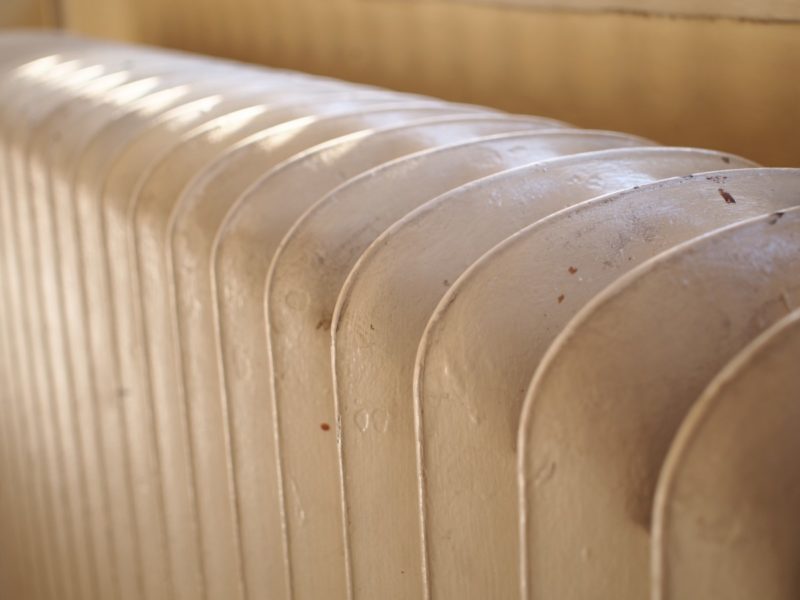The question is: how does an infrared heater work? Heaters that use infrared technology function similarly to the sun. They produce invisible infrared light consumed by you and the items in the environment.
A sequence of spirals and a projector has infrared light, which is then directed outward. This sunlight heats your body as it absorbs it.
If you had ever been cold in the shadows but warmed up as you move into the sun? Since the clothes and skin receive the sun’s infrared radiation, it heats your body. Infrared is a type of radiant heat, the most fundamental kind of heat you understand. It is a component of electromagnetic radiation. It’s all organic, but it’s a similar kind of heat. Let’s get started!
How Infrared Heater Works?
What are the principles behind infrared heaters? How does an infrared heater work? Electricity is converted into thermal radiation in infrared heaters. The electromagnetic spectrum includes infrared wavelengths. The temperature is comparable to the winter sun over your skin or a wood stove. It was the same type of heat that your own body produces. It’s the simplest method of heating that man has devised.
The immediate heat transfer from the burner to the item (yourself and the space surrounding you) without providing heat between those is known as infrared. That’s the similar heat we experience in a sun-heated atmosphere, and it’s the wavelength that the body absorbs the most effectively. It is natural and safe (UV, not infrared, is hazardous). Nowadays, modern tech, such as Herschel Infrared heating, which is 100 percent eco-friendly, enables us to employ infrared radiant heat transfer in a fashionable, pleasant, and highly adjustable manner.
How Effective Is Infrared Heating?
Since convection radiators have a warm atmosphere, the finest “low consumption” innovative electricity convection radiators require roughly 110 W / 100ft3 to sustain inefficient absorption of heat by the atmosphere and inadequate energy transmission further out. Because Herschel infrared panels don’t heat the air, 70 W / 100ft3 is usually required. You might believe that a kW of radiation released by the radiant heater or convection may have the same heat transport qualities, but that isn’t the case. Because radiant heat transfers heat more quickly per kW than convection, you’ll consume it less often.
Electric convectors or Herschel run for almost 40percent of the needed heating duration, typically called “effective power”; however, due to the fundamental variation in heat transmission, Herschel could save approximately to 37percent on power expenses when contrasted to night storage and convection heaters.
What Is Infrared Heating?
It’s a heating technology that uses infrared radiation to warm you. Through electromagnetic waves in the infrared area, thermal energy is delivered precisely to a body with reduced temperature. Because the outside air is not warmed and does not participate in the heat transmission, infrared heaters are convenient, healthful, energy-efficient. The heat generated is pleasant and wet. Electricity or fuel is used for infrared power heaters—the wavelengths of electromagnetic radiation in the infrared range, from 780 nanometers to 1 micrometer.
Smaller wavelengths have more significant frequency and related energies in the infrared spectrum. As a result, the thermal conduction by infrared rays can range between hundreds of degrees Celsius to 3,6000 degrees Celsius. In the past few decades, advances have been achieved in harnessing energy for such good of humanity based on fundamental scientific concepts. Infrared heaters now come in various functions and styles to meet our varied demands.
Our offices, workplaces, living rooms, warehouses, and garages are all warmed by them. Infrared heaters are helpful in various industries since they may be used for curing, drying, thermoforming, etc. Infrared heaters have been used in pharmacies to aid recovery via physiotherapy.
When Should Infrared Heaters Be Used?
Although infrared heaters offer direct, cost-effective warmth, this does not negate the need for heating systems. Most infrared heaters are not designed to heat a whole house. Infrared heating systems are most commonly seen in extensive facilities with prolonged heat dissipation, including warehouses, workshops, and aviation storage areas. Wide doorways or even other openings, which are frequently closed or closed, are standard in these rooms. To protect these regions from overheating, infrared heat is adequate.
Infrared heaters are also commonly seen in manufacturing industries, although they aren’t just for commercial locations and vast spaces. They’re handy in home building and remodeling work, like letting the paint dry since they can concentrate heat on items rather than merely blasting warm air into a space. Infrared heat may well be the solution whenever straight heat is required.
Infrared heaters may also be used in your health club or salon; infrared saunas are becoming incredibly common. The latest tech directs infrared rays onto bodies, heating them similarly to the sun’s beams except without the Ultraviolet radiation. Infrared heat bypasses the air and warms bodies instantly, which is vastly more efficient. Here’s an infrared heater safety guide.
It’s A Wrap!
After reading this article, we hope you all will understand how does an infrared heater work. Above we have discussed how these heaters work and everything related to infrared heatings. Read this article carefully to understand it well. Thank you, friends, for being with us at the end!
Read related articles; know how to add a thermostat to a wall heater and how to clean a wall heater.

